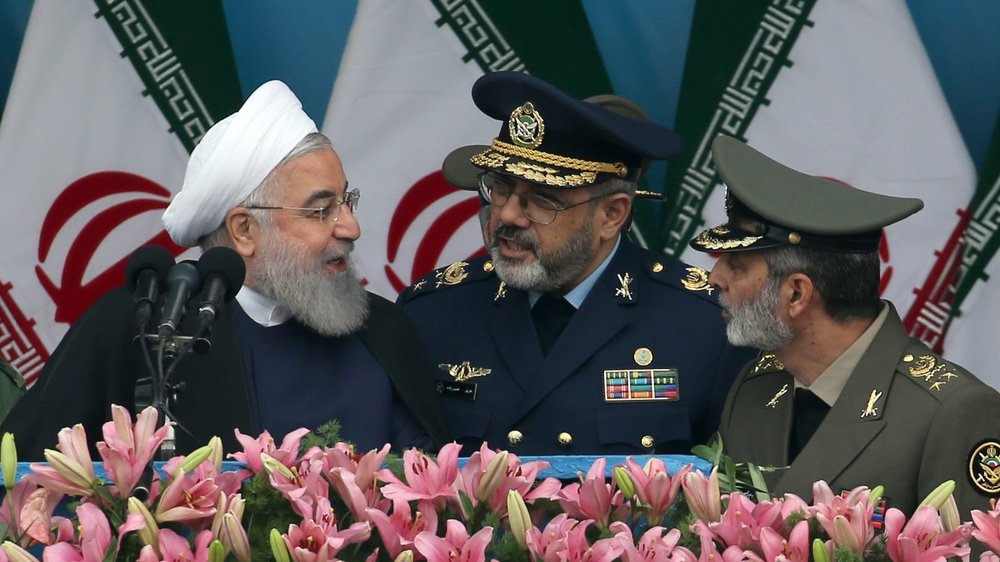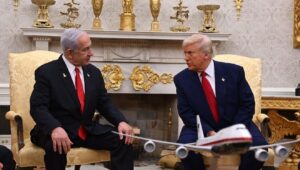When regional powers Iran and Saudi Arabia spoke of a new alliance around five months ago, the government in Jerusalem was seriously concerned. The new alliance between the Shiites in Tehran and the Sunnis in Riyadh sparked fear, and in the Israeli parliament the coalition accused the opposition of having pursued the wrong Middle East policy under Naftali Bennett and Yair Lapid. The opposition did the same, blaming Benjamin Netanyahu, under whose government Shiites and Sunnis would have converged. In Israel, there was a feeling that the whole Middle East wanted to unite against Israel.
Sunnis and Shiites are arch-enemies. Both branches of Islam go back to the 9th century, when there was a political-religious dispute about the successor to the Prophet Mohammed. The Shias claimed that Mohammed wanted his nephew and son-in-law Ali as his successor. The Sunnis did not agree with this. They chose a friend and companion of Mohammed as their successor. This divided Islam and for this reason the two siblings hate each other. Anyone living in Jerusalem has only to talk to the Palestinians (Sunnis) to understand how much they consider the Shia to be blasphemers.
Both countries have opened their respective embassies in Riyadh and Tehran, ushering in a new era in the Middle East. Since then, five months have passed and nothing has happened. The Middle East has not changed. It always sounds bombastic when people talk about a “New Middle East.” It reminds me of the “New Middle East” that Israel’s late Oslo architect Shimon Peres raved about 20 years ago.
See related: The Real New Middle East
Neither the Sunnis nor the Shiites have really come closer. Consider a few points:
- In recent weeks, Iran has made it clear to Saudi Arabia and Kuwait that Tehran is insisting on its gas rights in Kuwait’s Al Durra gas field in the Persian Gulf.
- In recent days, Iran has claimed complete control of three islands in the Persian Gulf, Abu Musa, Big Tunb and Little Tunb, at the entrance to the Strait of Hormuz. Iran is in conflict with the United Arab Emirates south of the islands on this issue. Iran has also established new relations with the UAE.
- Not much is happening in Syria either. Syria belongs to the Shia axis in the Middle East as the Assad family are Alawites, a Shia breakaway. Since the outbreak of the Syrian civil war, Syria has been under complete control of Tehran. According to Saudi sources, Saudi Arabia has halted the renovation of its embassy in Damascus. The Sunni government’s relations with Syria were also frozen. Among other things, because of the ongoing drug exports by pro-Iranian militias from Syria to Jordan and Saudi Arabia, which continues to increase dramatically. Bashar al-Assad’s Syrian regime is heavily involved in the international trade in synthetic drugs. However, the main buyers of Syrian drugs are the Gulf States, above all Saudi Arabia. Riyadh wants to stop this, but cannot. According to The Economist, the value of all drugs seized from Syria was $3.4 billion.
- Recently, the embassies of Saudi Arabia, Bahrain, Kuwait and the United Arab Emirates in Lebanon issued warnings regarding the economic crisis and Hezbollah. Lebanon is under the strong influence of the Shia Hezbollah, which is financed by Iran.
- The crisis in Yemen, on Saudi Arabia’s southern border, is also not over, despite the new friendship between Riyadh and Tehran. In Riyadh, the Sunnis hoped the alliance with Tehran would end fighting with the Houthis in Yemen, who are loyal and allied to Iran. In Saudi Arabia there are already plans to sign a peace agreement with the Houthis during the fasting month of Ramadan. Any negotiations between the Houthis and the Saudis are failing, and the Shiites in Tehran are not pushing for an end to the war against the Saudis in Yemen.
These are just a few examples of the rupture of the Shiite-Sunni alliance, possibly in favor of Israel. That’s why in the last few weeks one has repeatedly heard signals of a possible normalization between Jews and Sunnis (Riyadh). Westerners need to understand that the bitter rivalry between Shias and Sunnis does not disappear with a signature on a piece of paper. Headlines don’t solve conflicts and don’t create peace. The processes in the Middle East are proceeding at a different rhythm, we have been writing about this for decades in connection with the Oslo Accords between Israel and the Palestinians. The Arab governments have time and will waste political time on Israel until they get what they want from their opponent. In the case of Sunni and Shia it is even worse. The Sunni-Shia rivalry runs deeper than meets the eye.
For decades, Shias and Sunnis – Iran and Saudi Arabia – have been fighting for dominance in the Middle East. And that will probably remain so for a long time. For technical reasons, in March this year, Sunnis and Shiites formed an alliance to help each other in this geopolitical situation. That was the idea, but in reality everything is much more complicated.
Economic reasons played a role for Iran. The country is heavily dependent on oil exports. International sanctions have largely pushed Iran out of the market. Iran is in a deep economic crisis, the local currency has lost 90 percent of its value in the past ten years. Saudi Arabia also has economic interests. In order to modernize its own economy, the kingdom is dependent on investments from abroad. The alliance is also hoping for a de-escalation of the Yemen war, which is not only dangerous for Saudi Arabia, but also expensive and damaging to the kingdom’s reputation.
— johar.D.r. (@Drm06201439) May 2, 2023
Caption: A religious Jew asks the Saudi to normalize relations: “Normalize with us, give us meaning.”
Israel must exploit this gap if it seeks normalization with Saudi Arabia. The question, however, is what price Israel must pay. According to various sources, Riyadh and Washington insist on Israeli gestures toward the Palestinians. Should Israel show too much enthusiasm for normalization with Riyadh, the adversary could take advantage of this and demand even more from Jerusalem.















